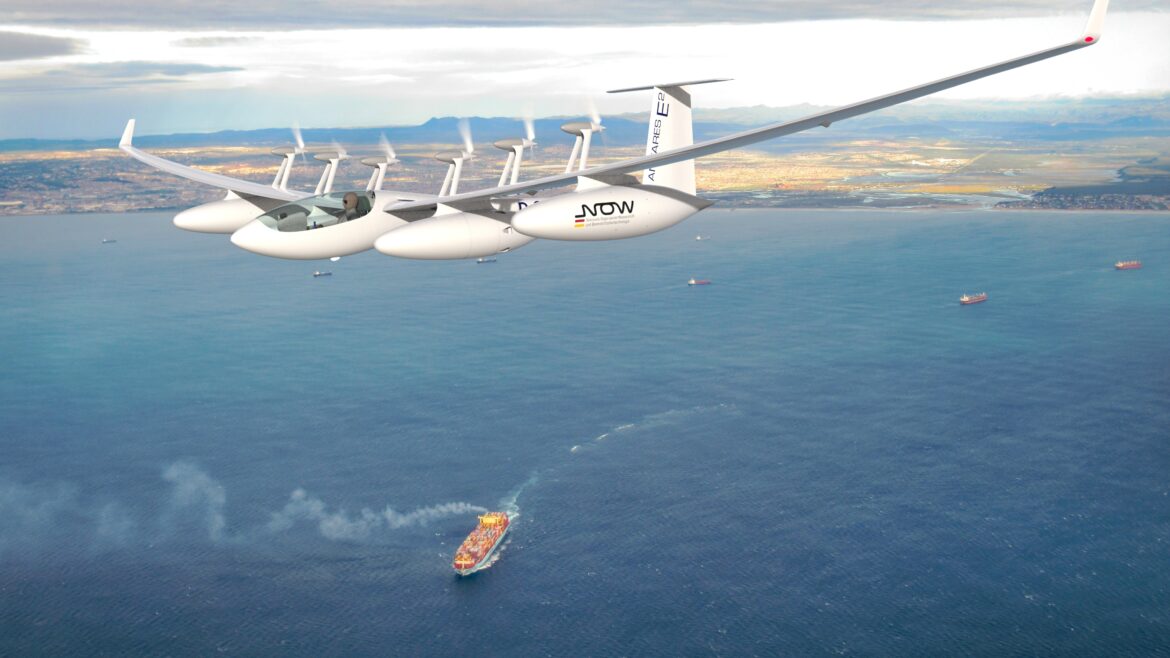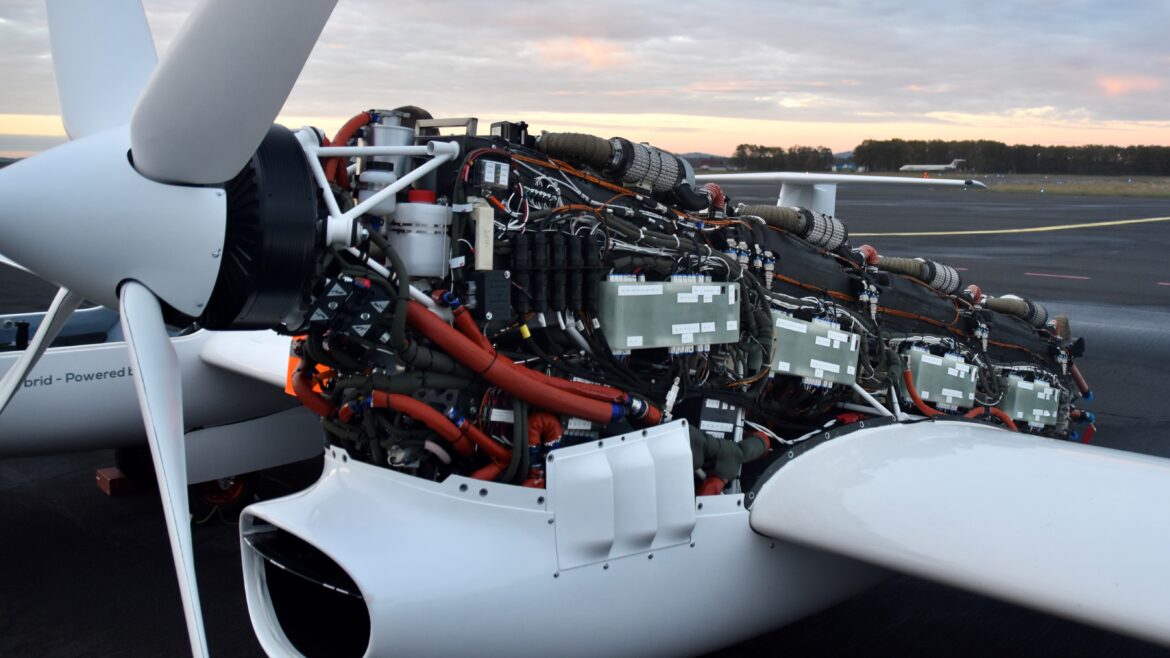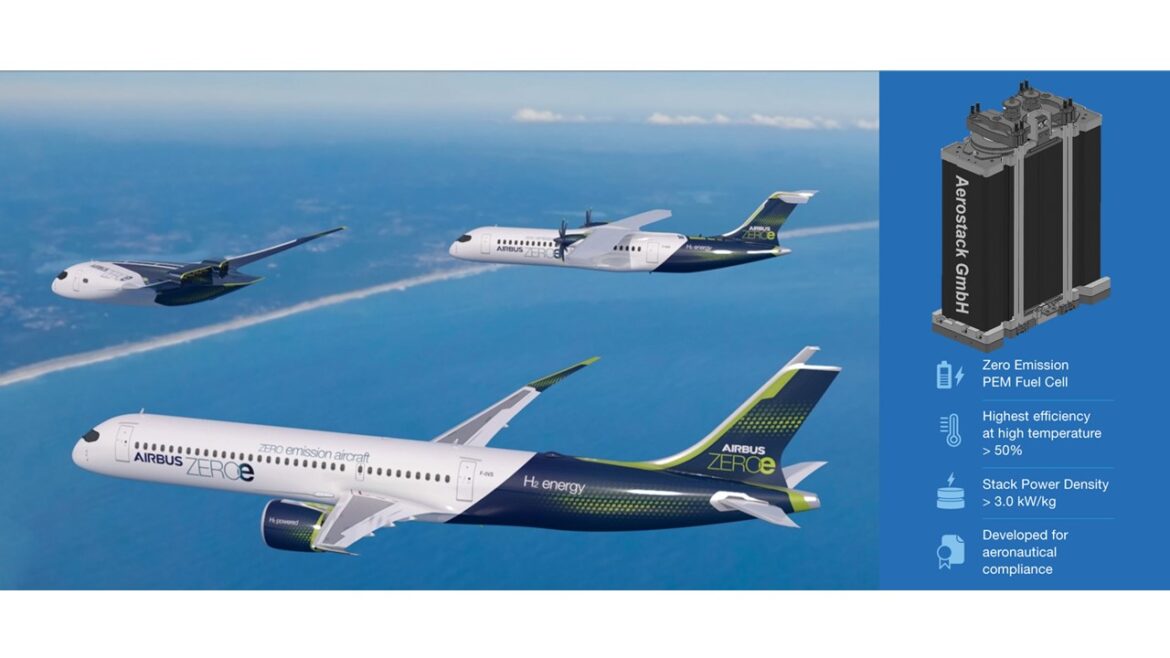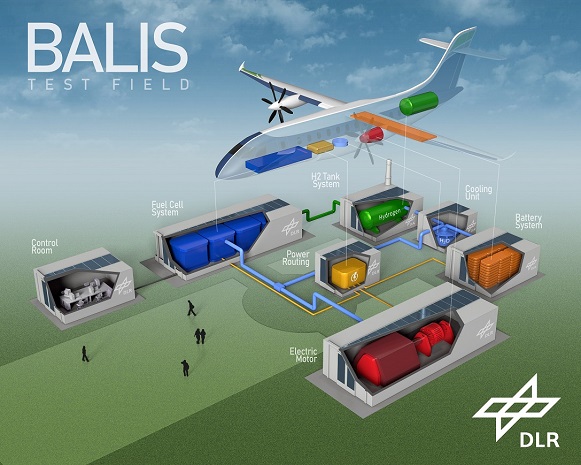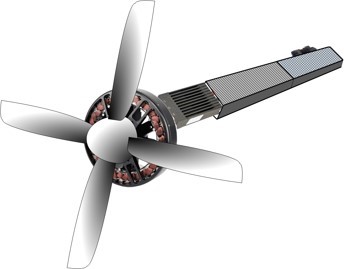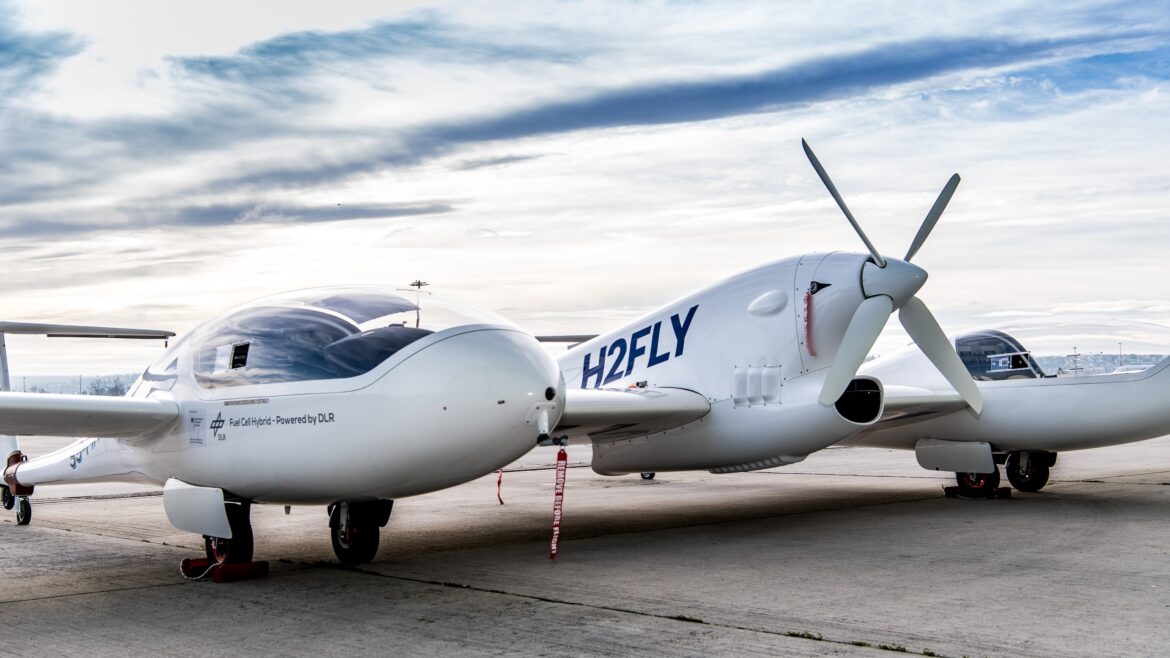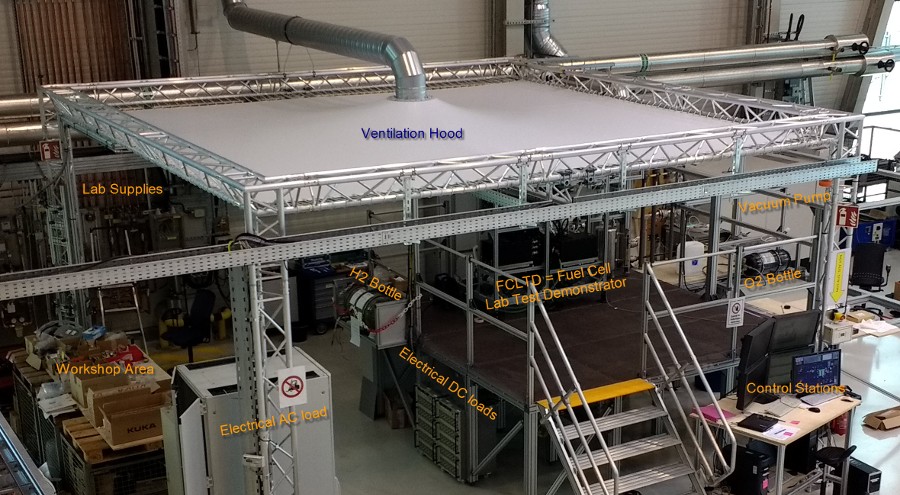In aviation, high growth rates in passenger numbers are expected again in the future, which will require significant reductions in specific greenhouse gas emissions. In this context, the use of hydrogen is seen as having great potential if it is used in fuel cells or for combustion in modified turbines. Electric flying with electricity from fuel cells is seen as an environmentally friendly solution, especially for short- and medium-haul flights. The highest demands are placed on weight, power density, reliability, and service life.
Research and development work is therefore aiming at short-term development stages. These include hybridized fuel cell battery main engines for aircraft (up to 60 passengers) on the one hand, and the development of fuel cell-based components and systems for the electric powertrain of larger passenger aircraft on the other.
A good basic understanding of hydrogen technology in aviation has been obtained through the various R&D efforts in the NIP. Highly integrated systems based on compressed hydrogen in the small aircraft range for up to four people have been realized, validated, and demonstrated. Preparation for upscaling to 1.5 MW of power and larger is the subject of ongoing projects.
The main goals for the coming years are the development and market introduction of hydrogen fuel cell technology for emission-free use in commercial aviation. Initial aircraft are expected to be designed for 40 to 60 passengers and to achieve a range of about 2,500 km. At the same time, preparations are being made for the development of components and systems in performance classes beyond this.
R&D work in the NIP addresses existing hurdles and challenges in upscaling fuel cell components for megawatt-scale subsystems, liquid hydrogen storage development, and the optimization of cost, lifetime, and power density factors.
For reasons of weight and volume, the main option for operating aircraft in the relevant power classes and necessary ranges is to store hydrogen in liquid form. Thus, the further development of this storage form for use in aircraft is a central element. To this end, the airport apron and its infrastructure must also be upgraded for the refueling of liquid hydrogen for aviation.
